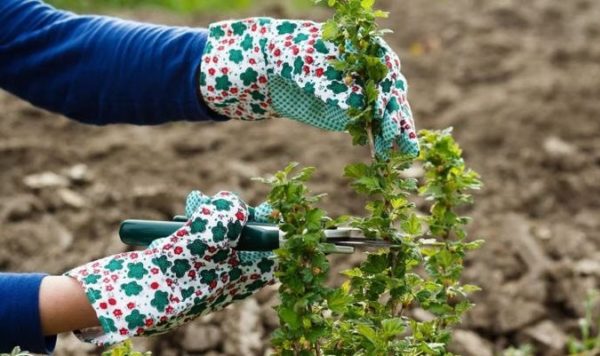In order to get a good harvest, due attention should be paid to each plant, including the gooseberry. Care for plants should be throughout the year.
This article will deal with the care of gooseberries in the fall. How to hold pruning, feeding, watering, and shelter for the winter.
Table of contents
The importance of caring for gooseberries in autumn
Some inexperienced gardeners believe that the most important thing is to harvest in time and you can be calm until spring. This is a misconception.Autumn care should continue when growing most plants. The same applies to gooseberries. Gooseberry is considered an unpretentious plant, but, nevertheless, depending on how the bushes are prepared for the passage of winter, depends on the value of the subsequent harvest.
Autumn care is very important. It is during this period that a complex of works is carried out, which helps the bushes to survive in the cold season, as well as prepare the gooseberries for the next season. Autumnal care will protect the gooseberry from diseases, ensure the correct formation of branches and contribute to the accumulation of a supply of nutrients in the soil.
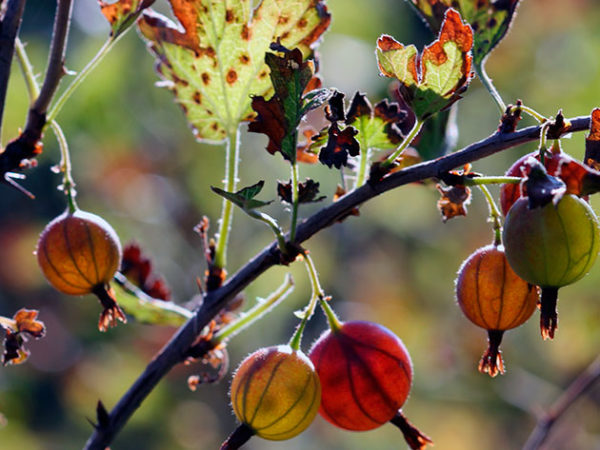
Stages of autumn care for gooseberries
Long-term practice of growing gooseberries shows that in order to get a good harvest before the start of winter, the following work should be done:
- treatment of the root zone;
- disease prevention;
- trimming;
- feeding gooseberry;
- watering;
- shelter for the winter.
Processing root zone
First of all, you should start with garbage collection. In the root zone by the autumn foliage, crushed and rotten berries accumulate. All this garbage has to be cleaned up with the subsequent burning.
Then it should be removed around the rhizome all the weeds, as well as the usual woodlice. In order not to damage the roots of the gooseberry, weeds should not be pulled out and carefully dig. Typically, wheat grass grows under the bushes. This weed is very draining soil, so it should be removed immediately.
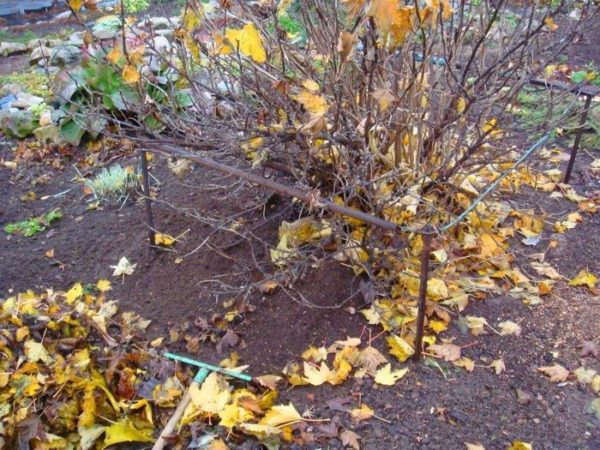
Disease prevention
By the autumn, on some gooseberry bushes may appear pockets of various diseases.
In order to prevent them from developing in the fall, preventive work should be carried out to destroy the painful lesions. These works should be started immediately after the harvest, when there are no berries left on the bushes. First, clarify the extent of the damage.
If they have reached such a scale that the plant can no longer be saved, then they should sacrifice. It must be dug up and burned before the formation of ash.There is no need to regret the loss, since in this way other landings are protected from disease. If the lesions are small, then you can get rid of them by cutting.
In any case, for the prevention of diseases, the bushes and the soil under them should be fertilized with Bordeaux mixture or copper sulphate. You can also use the solution Inta-vir. Good results show the foundation and topazol.
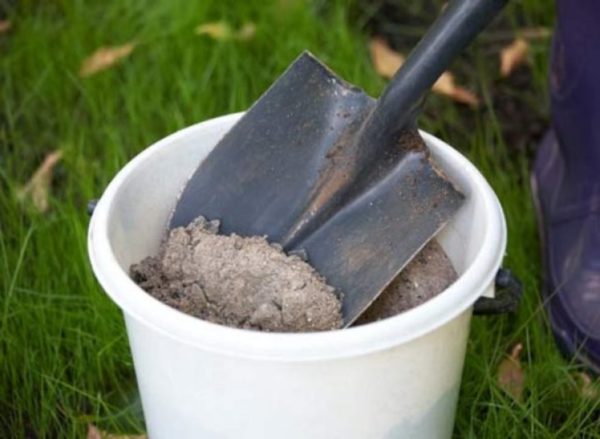
Pruning bushes
Pruning is necessary so that the bush is well lit. When pruning the plant is released from the sick, broken and lying on the ground branches.
Cut the gooseberries should be annually. However, full pruning is recommended to begin when the bush has reached the age of six.
Cut underdeveloped branches located in the radical part is necessary for next year. When such pruning is recommended to leave no more than 3-4 strong shoots.
A full trimming procedure should begin in mid-autumn.For this you need to stock up with a good sharp shears and thick gloves. In order not to transfer foci of disease from one bush to another, you should periodically wipe the pruner with alcohol.
Before pruning the plant should be carefully examined. Determine its thickness and ensure the presence or absence of disease.
First, cut all the branches that prevent the bush to grow, usually when viewed, they are evident. Then cut all the broken branches and those that lie on the ground or are too far from it. If you leave them, the berries will come into contact with the ground and be driven.
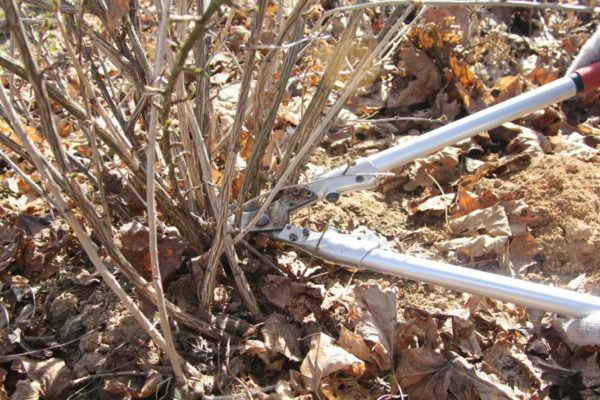
The next stage of pruning is thinning. During the summer shoots appear on the bush, which thickens the plant. Such shoots usually grow in the very center. A dense bush is weakly blown by the wind, and, therefore, becomes unprotected from the formation of fungal diseases. And the harvest is tied to the outer branches, and this leads to a decrease in yield. The branches located inside the plant should be cut out, and the cut points should be sealed with garden pitch or special garden paint.
When pruning recommended several rejuvenate landing. To do this, cut the stems over 5 years old.
Thus, only young, well-developed stems should be left on the bush. If the gooseberry is 6-7 years old, then 5-6 stems are left on it. They should be placed evenly throughout the crown. It is verified that such shoots next year will give a high yield.
Gooseberry fertilizer
Feeding should be carried out during the whole season of plant care. The first time you need to feed in the spring. For the first feeding, a solution of nitrophosphate with urea is used.
The next feeding should be before flowering. It consists of wood ash, which is sprinkled around the gooseberry and potassium sulfate, which is fed to the roots. At the same time, the gooseberry must be fed organic fertilizers, such as "Berry" or "Wage earner".
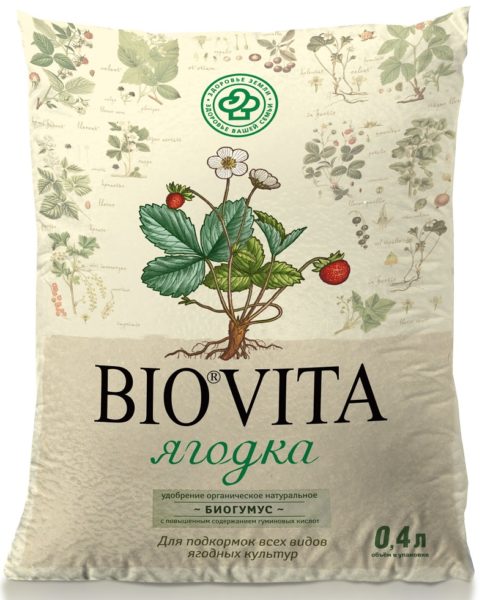
The third in the spring and summer feeding is produced in the period when the first fruits begin to fasten. For this treatment applied nitrophoska and liquid fertilizer "Ideal".
Autumn feeding has a special meaning. From that it will be so correctly conducted dressing, depends on the total number of berries, their size and taste.
Autumn feeding should begin in August. The fact is that the gooseberry in order to assimilate useful substances must be about 3 weeks. If such top dressing is left for a later time, then the earth begins to cool and the root system begins to enter a state of rest. In this condition, it is not able to absorb and absorb the nutrients and feeding will not be effective.
The following types of fertilizers are used for autumn feeding:
- phosphate. They help to strengthen the root system, as well as to supply the sap flow process with carbohydrates;
- potash. These fertilizers for the winter period remove excess water from the stems and increase their frost resistance;
- organic. Making them increases yields. Fertilizers such as manure, droppings and compost are especially popular;
- wood ash. It is designed to saturate the gooseberry mineral elements.
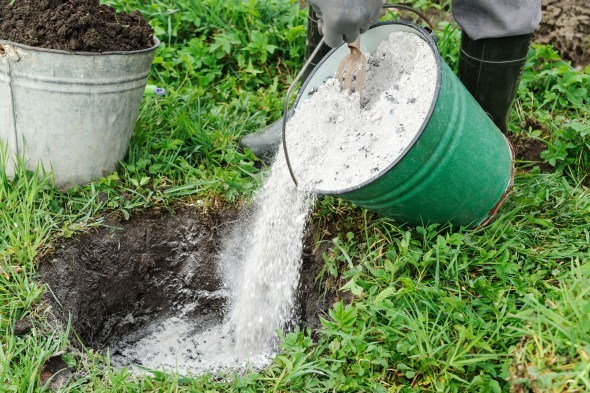
Watering
Autumn watering is necessary only when autumn is marked by dry and warm weather. If there are heavy rains in the fall, then such irrigation is not effective and should not be carried out.
The irrigation procedure is very simple. To do this, a small groove is dug around the bush and water is fed into it. The amount of water can be at least 30 liters under each bush. After the water is absorbed into the ground, the groove is filled with a layer of earth.
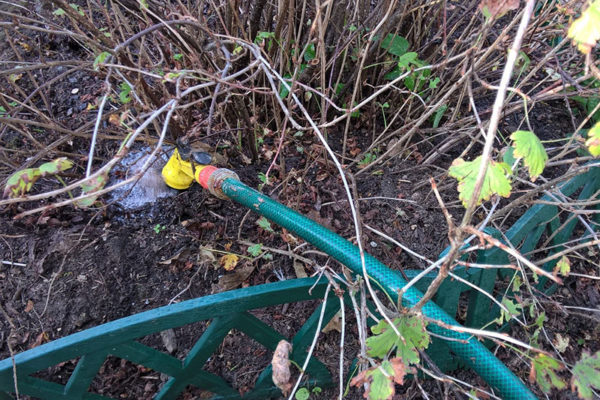
Good shelter for the winter
To save the bush in winter, it must be protected from frost. This is usually done in late autumn. From the beginning of the first frosts, it is necessary to bend the branches to the ground and fix them in the lower position with the help of pegs.
To protect the root system, it must be mutilated.. For mulching can be applied peat, leaves or needles.
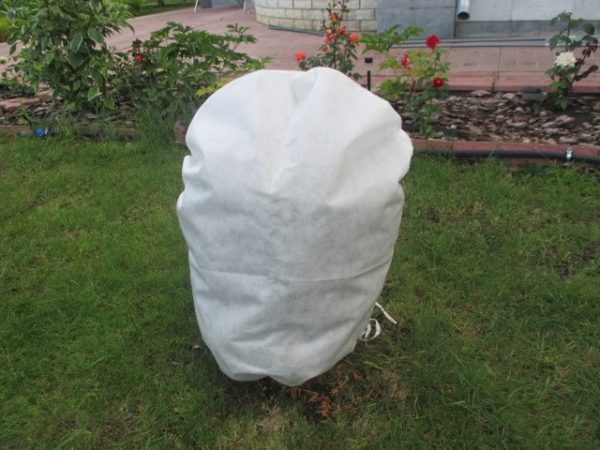
Practice has shown that plants are best preserved under a layer of snow. For this, in regions where snowy winters are issued, gooseberry bushes should be spud with a layer of snow. This is done immediately after the first snow falls.In case of very severe frosts, in order not to freeze the branches, dry grass splashes on them or they are covered on top with cardboard or plywood shields. The grass is prepared in the fall and its stock should be stored until spring.
Thus, if you properly follow all the recommendations for the care of gooseberries, including autumn work, you can get good yields every year. In addition, the autumn processing of gooseberry bushes ensures their preservation for many years. For currants and raspberries, care is similar.
